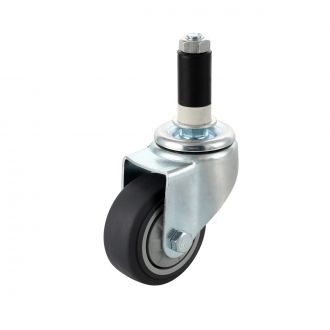In industrial environments, pipe racking systems play an essential role in organizing and storing materials, optimizing workflow, and maintaining workplace safety. These systems are designed to manage pipes, tubes, bars, and other elongated materials that require secure and structured storage solutions. Pipe racking systems are widely used in warehouses, manufacturing plants, and supply chain operations for their ability to increase efficiency, improve accessibility, and save valuable floor space.
Below, we delve into the types, benefits, installation requirements, and safety considerations of pipe racking systems to help businesses make informed decisions when selecting the right solution for their storage needs.
1. What Are Pipe Racking Systems?
Pipe racking systems are specialized storage solutions created to organize and hold pipes, bars, tubes, and other elongated products. They are designed to improve workplace efficiency by making it easy to access and retrieve items, reducing clutter, and promoting a safer working environment. Commonly seen in industries such as manufacturing, construction, automotive, and plumbing, pipe racks ensure that materials are systematically stored, which helps to prevent damage and streamline operations.
Key Features of Pipe Racking Systems
- Modular Design: Many pipe racking systems are modular, meaning they can be adjusted or expanded based on storage requirements.
- Customizable Layouts: Systems are available in a variety of sizes, shapes, and configurations to accommodate different material lengths, weights, and diameters.
- Durability: Built to withstand heavy-duty use, most pipe racks are made from robust materials like steel, ensuring stability and longevity.
2. Types of Pipe Racking Systems
A. Horizontal Pipe Racks
Horizontal pipe racks allow pipes to be stored in horizontal orientations, providing easy access to materials. This type of racking system is ideal for storing long materials and is commonly used when pipes need to be loaded and unloaded quickly.
B. Vertical Pipe Racks
Vertical pipe racks position pipes and tubes vertically, allowing for maximum storage in limited floor space. This system is ideal for managing smaller pipes or those that are frequently accessed. It offers excellent space-saving potential and is popular in workshops or storage facilities with limited floor area.
C. Cantilever Pipe Racks
Cantilever racks are highly effective for storing longer items like pipes and tubes. These racks feature arms that extend from a central column, allowing materials to be placed on top without any vertical obstructions. Cantilever racks are customizable and support heavy loads, making them a popular choice for storing metal pipes or large, heavy materials.
D. A-Frame Pipe Racks
A-frame racks have an A-shaped structure that supports pipes at an angle. These racks are suitable for storing pipes of varying lengths and diameters, allowing for easy sorting and organization. A-frame racks are commonly found in construction sites and supply yards, where materials need to be stored securely and accessed quickly.
E. Stacking Pipe Racks
Stacking pipe joints are mobile and stackable, offering versatility in transporting and organizing materials. They can be moved around the workspace and stacked when not in use, maximizing floor space and enabling flexible storage solutions.
3. Benefits of Pipe Racking Systems
A. Enhanced Organization and Accessibility
By keeping materials organized and within reach, pipe racking systems reduce retrieval time and improve efficiency. Workers can access materials quickly and safely, minimizing downtime and increasing productivity.
B. Maximized Space Utilization
Properly implemented racking systems make the most of available storage space. They enable the stacking of materials vertically or horizontally, freeing up valuable floor space and allowing businesses to store more within the same area.
C. Improved Safety Standards
With materials securely stored, the risk of accidental falls, trips, or collisions decreases. Pipe racks ensure that heavy or awkward materials are stored properly, which is essential in maintaining a safe work environment and minimizing accidents.
D. Increased Material Longevity
Proper storage reduces the chance of materials becoming damaged from improper handling or overcrowding. Pipe racking systems keep pipes and tubes off the floor, where they are less likely to encounter moisture, debris, or damage, leading to longer material life.
E. Cost Efficiency
While pipe racking systems require an upfront investment, the benefits of improved efficiency, safety, and material protection lead to cost savings over time. Businesses can reduce material loss, decrease workplace accidents, and streamline processes, ultimately saving money.
4. Key Considerations When Installing Pipe Racking Systems
A. Load Capacity Requirements
Each racking system has specific weight limits, and exceeding these can lead to rack instability or collapse. Before installation, assess the total load that the system will need to support, ensuring that it is capable of handling the weight of all materials stored.
B. Space Availability and Layout Planning
Proper layout planning is essential to ensure that pipe racking systems fit well within the available space. Assess the dimensions of your workspace and consider how the racking system will interact with other equipment, walkways, and safety zones.
C. Type of Materials to Be Stored
Different pipe racking systems are designed to accommodate specific types of materials. Consider the size, weight, and quantity of pipes or tubes you plan to store and select a racking system accordingly.
D. Safety and Compliance Standards
It is crucial to follow safety and compliance standards when installing and using pipe racking systems. Make sure that your racking system complies with OSHA regulations and any local or industry-specific standards.
E. Installation and Maintenance
Professional installation is recommended to ensure the stability and safety of the racking system. Regular maintenance, including inspections for structural integrity, load stability, and wear-and-tear, is necessary to ensure long-term functionality and safety.
5. Safety Tips for Using Pipe Racking Systems
A. Conduct Regular Inspections
Inspect pipe racks regularly for signs of wear, rust, and damage. Address any issues immediately to prevent accidents and ensure the longevity of the racking system.
B. Train Employees on Safe Usage
Ensure that employees are trained on the proper methods for loading and unloading materials from racks. Safe handling practices reduce the risk of injuries and improve efficiency.
C. Avoid Overloading Racks
Overloading is one of the most common causes of rack failure. Always adhere to the specified load limits, and distribute the weight evenly across the rack to prevent imbalances.
D. Utilize Safety Accessories
Install additional safety accessories, such as end stops, guardrails, or netting, to secure materials in place and prevent accidental dislodging. Safety accessories add an extra layer of protection for both workers and materials.
6. Choosing the Right Pipe Racking System for Your Business
To select the best pipe racking system, evaluate your business’s unique storage needs. Consider the following:
- Storage Requirements: How much material will you need to store? Is it heavy or light, long or short?
- Frequency of Access: Will the materials be frequently accessed, or will they remain in storage for long periods?
- Space Constraints: How much floor space can be dedicated to storage?
- Budget: Determine the budget for installation, as well as ongoing maintenance costs.
Selecting the right system can significantly boost efficiency and enhance safety within your operations. Working with a reputable supplier can help you explore custom options that fit your business needs.
Pipe racking systems are essential for companies looking to streamline their storage processes and ensure safe, efficient operations. With a variety of types, customizable options, and significant benefits, these systems are adaptable solutions that can be tailored to fit any industry. By understanding your unique requirements, carefully planning layout and installation, and ensuring ongoing maintenance, your business can leverage pipe racking to improve material handling and foster a safer workplace environment.




